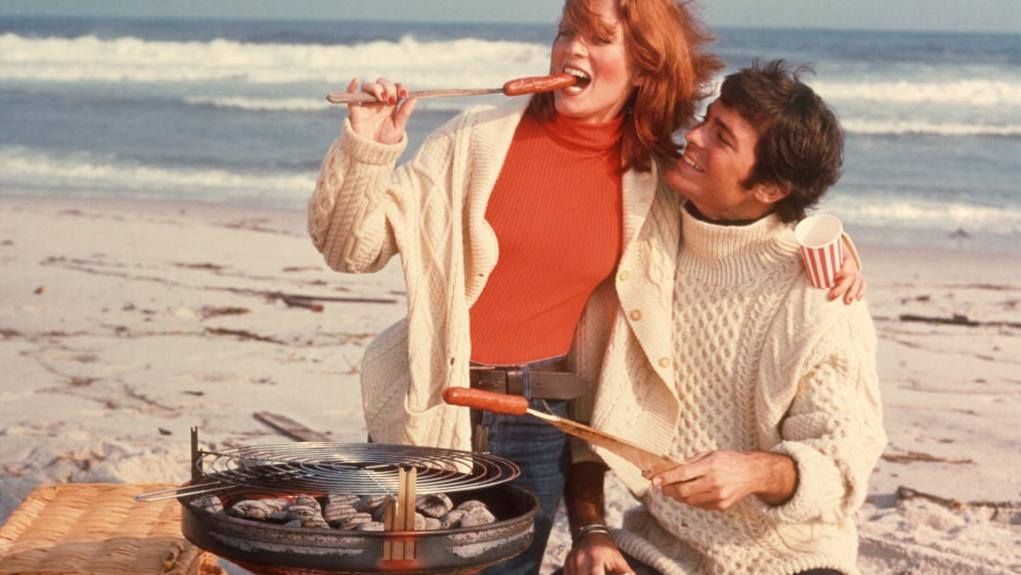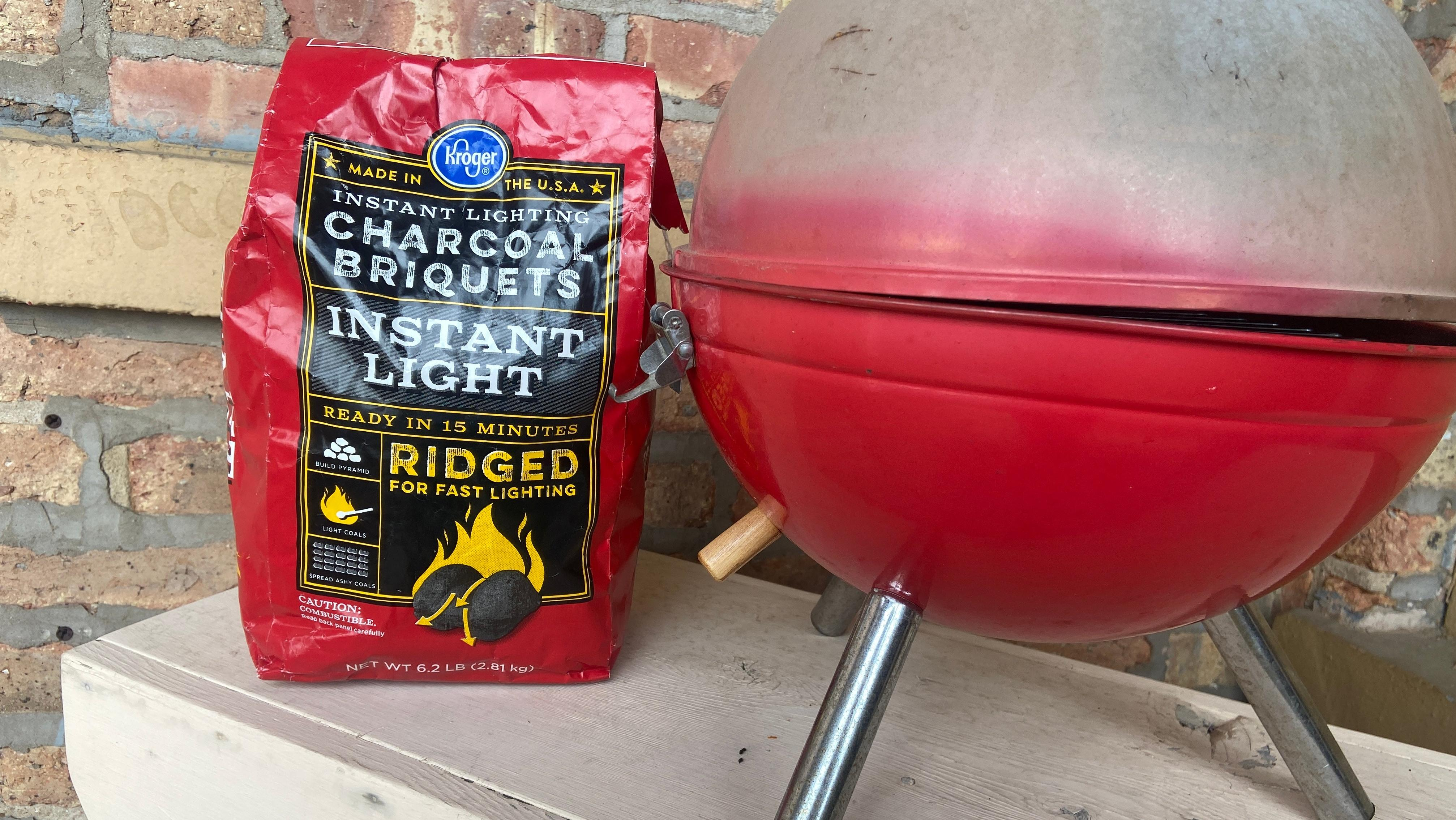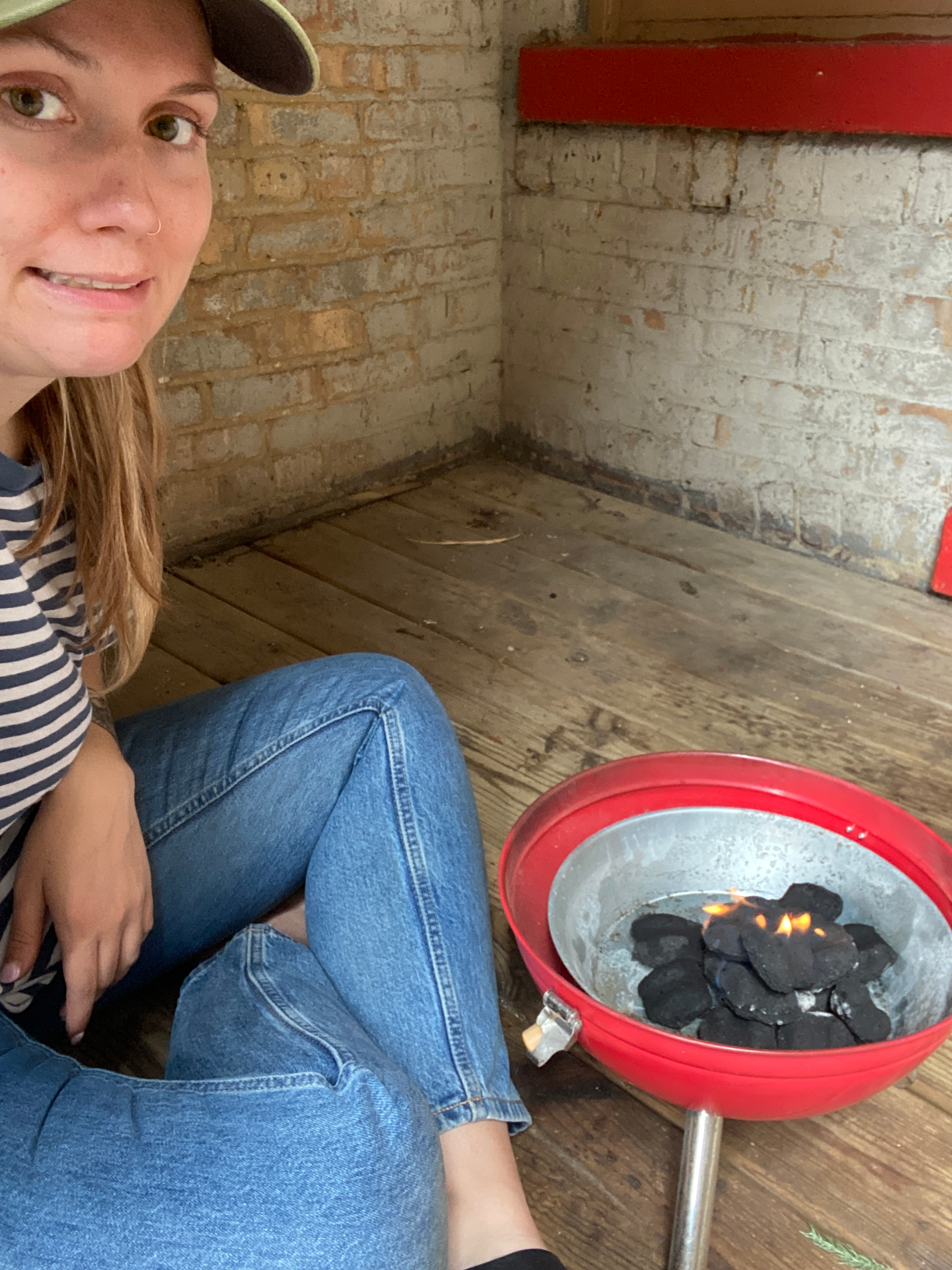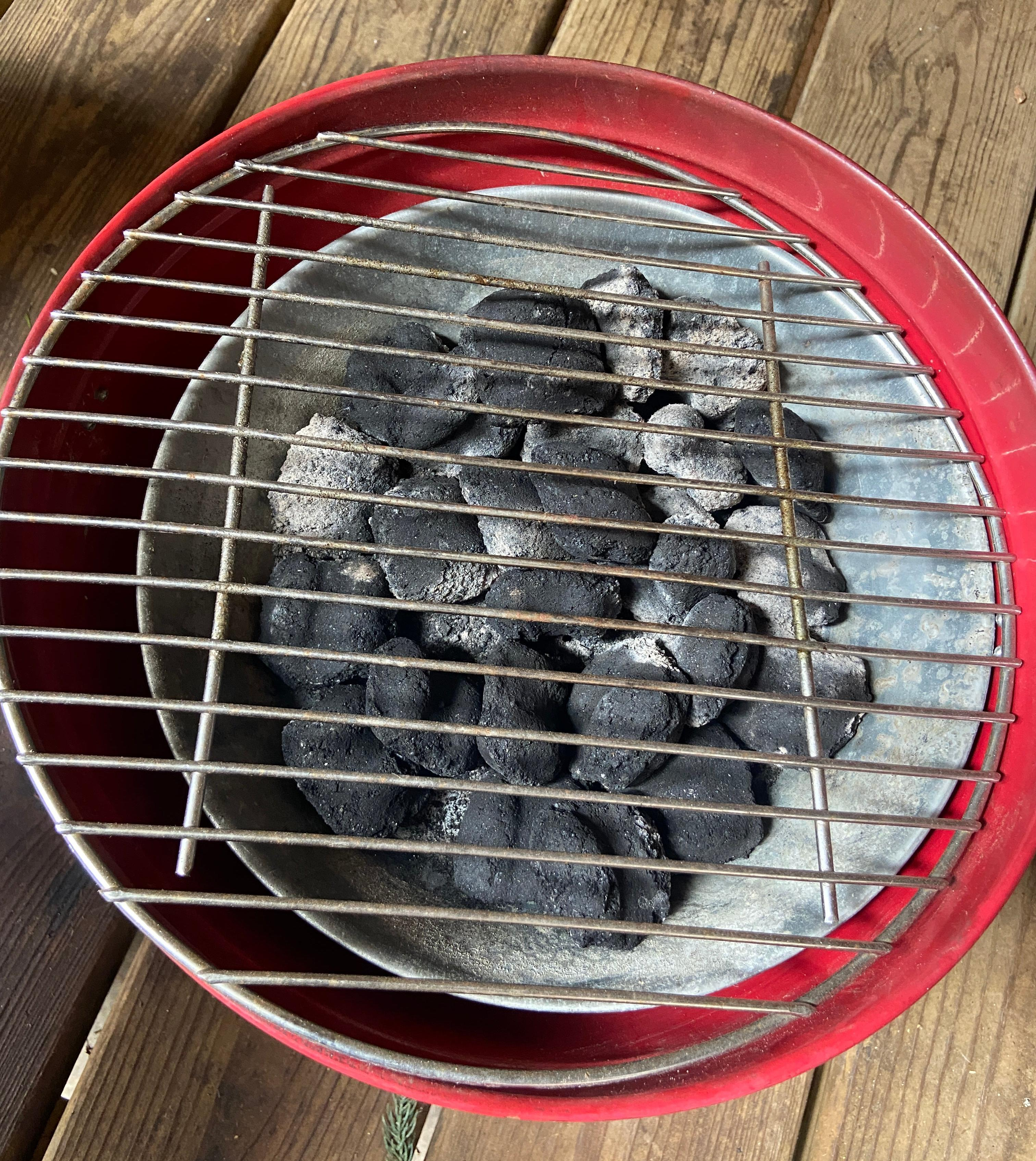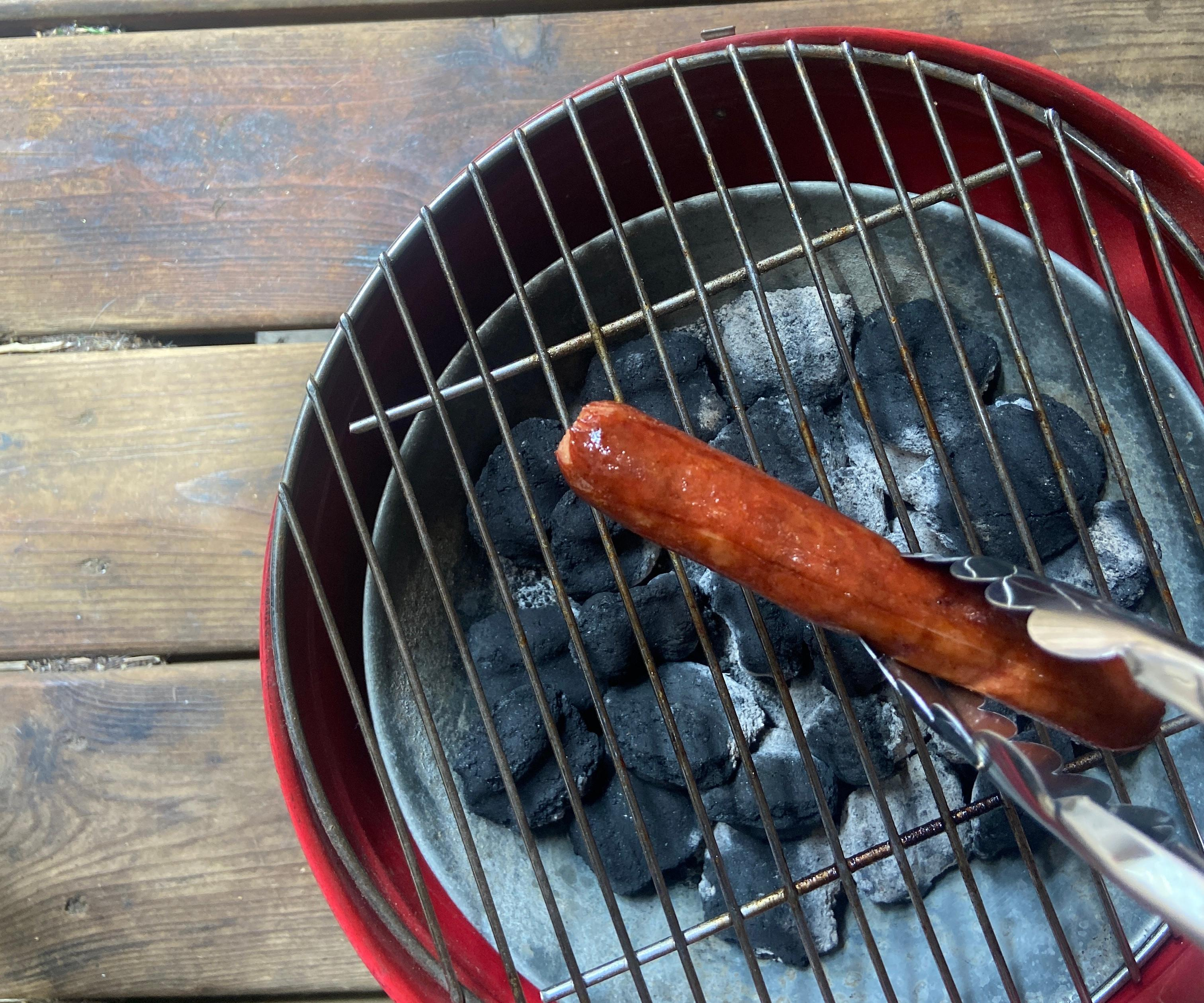The Dunce's Guide To Cooking The Perfect Camp Grill Wiener
I bought a tiny imitation Weber grill for $45 last May. It was the first of many manic pandemic purchases inspired by post-quarantine fantasy (a clay jewelry kit, so I could return to the nightlife scene in neon green earrings of my own making; a croquembouche cookbook, so I could return to dinner parties a much more impressive, capable baker). The grill lived in a very specific fantasy: I'd grill incredible kabobs for my smiling lover in the middle of the woods, at which point we'd decide to relocate permanently to a small cottage with no running water but excellent wireless internet.
My lover and I did not relocate to the woods. We did spend the Fourth of July at the park, where we joined the other couple in our pod for a socially distant fireworks display. I decided this was the perfect occasion to break out my grill. I also didn't bother to look up any instructions, equipping myself instead with EZ-light charcoal briquettes, a long-handled lighter, a pack of ballpark franks, and the kind of hubris that starts forest fires.
Once everyone settled in at the park, I dumped about 60 charcoal briquettes onto the grill and proceeded to ignore the charcoal packaging instructions, douse the whole thing in lighter fluid, and send billowing black smoke high into the Chicago sky. Grill's ready, I thought, popping the hot dogs directly onto the grill as it continued to belch thick smoke. Five minutes later, I presented my friends with still-cold wieners that were entirely black on one side. The grill top's charming red lacquer was completely burnt off, and I never used the thing again—until now.
If 2020 was about reckless purchases in the name of maintaining one's sanity, 2021 is about bravely striding into a brand new world and learning how to actually use those purchases. I decided to start by teaching myself to grill a single, solitary hot dog. Behold, reader: the dunce's guide to cooking a perfect hot dog on a portable charcoal grill.
Step One: Assemble your tools.
Here's what you'll need:
- Portable charcoal grill (I have this one, which is very cute and tiny)
- Charcoal briquettes. You can purchase EZ-light briquettes, which don't require lighter fluid, or you can purchase traditional briquettes, which do. If you opt for the EZ-light, please, please do not douse these in lighter fluid. You'll scorch your grill like I did last summer, and you'll ingest enough chemical gas to turn your lungs a permanent shade of aqua.
- Long-handled lighter
- Hot dogs of choice (I went with Nathan's, because they were on sale), plus buns and fixings
- Stainless steel tongs
Step Two: Assume the position.
Make sure to place your grill outdoors so you don't get, I don't know, carbon monoxide poisoning from the charcoal. You'll want to place it on a level surface (more on this later), and you'll want to stay away from grass, fabrics, overhanging trees—anything flammable.
Before you light your grill, make sure to open the bottom vent. Mine has two vents, both on the bottom. This will help feed oxygen directly into the fire, keeping it burning nice and steady for you.
Finally, before you light the thing, try to ensure that your Russian neighbor passes by, rolls his eyes at you, and wishes you "good luck on your project." This was a key factor in my success.
Step Three: Light the damn thing, if you can.
Lighting this stupid grill was, no joke, the hardest part for me. There are a few reasons for that. First, it was windy and damp outside. Second, my EZ-light charcoal briquettes were a year old, left over from last summer and pretty much completely ineffective. Third, I didn't have a charcoal chimney, which is apparently the easiest way to heat up charcoal according to FAMILY HANDYMAN DOT COM. Fortunately, as Takeout associate editor Aimee Levitt told me after the fact, you can buy miniature chimneys at most hardware stores. Learn from my mistakes!
In lieu of a charcoal chimney, I just piled my briquettes directly under my grill grate in a rough pyramid shape. My building just got new fire extinguishers, so I decided to add a generous squirt of lighter fluid to help whip my year-old coals into shape. I do not recommend this if you're working with brand new EZ-light coals, but it's a nice way to help old coals along.
I then let the fluid sink into the briquettes for about two minutes before lightin' 'er up. This wasn't an intuitive thing—another neighbor walked outside just as I was dousing the grill in lighter fluid and advised me to let the fluid sit for a moment to create a more even burn. Thanks, Peter in unit 3W!
Step Four: Let the charcoal do its thing.
Last summer, I placed the hot dogs directly on the grill immediately after lighting the coals. Don't do this. Once I actually read the instructions on the side of the bag, I learned that coals take time to reach an acceptable heat, which I'll call Wiener Mode. If you're grilling multiple dogs, let the charcoal sit for up to 25 minutes before you grill. As I was grilling one measly hot dog and, thus, using fewer coals, I achieved Wiener Mode around the 15-minute mark.
Important note: Your charcoal will tell you when it's reached Wiener Mode. Just wait until the edges of the coals are mostly white. If your charcoal is still deep black, the grill isn't hot enough to cook with.
Another important note: You won't be cooking over an open flame. Your charcoals may glow reddish like embers, but the flame will die out as the grill heats up. I didn't know this, so I doused my charcoal in, like, half a gallon of lighter fluid before Googling "CHARCOAL GRILL FLAME KEEPS DYING."
Step Five: Roast the weenie/s.
Finally, the hard stuff is over. Once you've reached Wiener Mode, your coals are mostly white, and your Russian neighbor has left the premises, you can grill your dog/s. I placed mine on my grill, covered the grill with its charred lid, and let it sit for about 10 minutes before flipping the dog to the other side. In the process, I accidentally rolled the wiener off of the grill and onto my dog-hair-covered porch, which is why you must. Grill. On. A. Level. Surface. Anyway, 10-ish minutes per side produced a solidly crispy hot dog skin for me.
Step Six: Enjoy! You’ve successfully navigated the Wiener Zone.
Once your hot dog has reached optimal crispiness levels, feel free to dig in. And if you find a beagle hair or two in there, don't worry about it. You're a bona fide Griller now. The world is at the tip of your tongs. What will you grill next? Steaks? Chicken? Even larger hot dogs? I'm sure your Russian neighbor has a few ideas.
